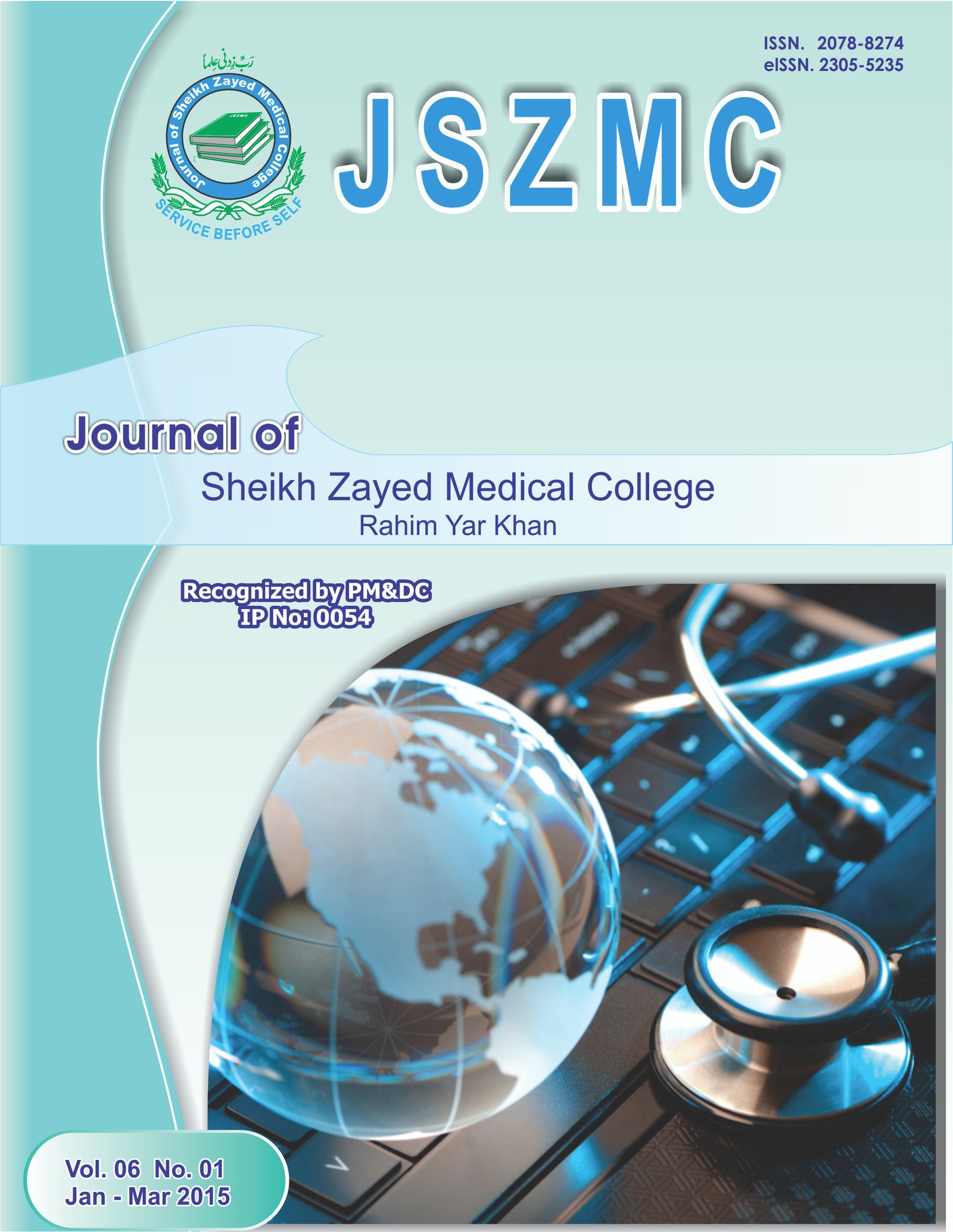ASPARTATE AMINOTRANSFERASE-ALANINE AMINOTRANSFERASE RATIO PREDICTS CIRRHOSIS IN CHRONIC HEPATITIS C PATIENTS
Keywords:
Chronic Hepatitis, Aspartate Aminotransferase, Alanine Aminotransferase, FibrosisAbstract
Background: Hepatitis C virus infection is on rise in Pakistan. Objective: To evaluate serum aspartate aminotransferase and
alanine aminotransferase ratio (AST/ALT ratio) in predicting liver cirrhosis of chronic hepatitis C patients. Patient and
Methods:Study Design: Aprospective study. Place and Duration of Study: This study was done in Gasteroenterology department
st th at Sheikh Zayed Hospital Lahore. Duration of study was 6 months from 1 January to 30 June 2010. Total 80 patients of chronic
hepatitis C confirmed by PCR were included in the study. The sera of the patients were tested for AST and ALT. Liver biopsy of
each patient was performed. Histological Activity Index (HAI) of the specimens was scored on the basis of Knodell score.
AST/ALT ratio was correlated with the histological stage (i.e. degree of fibrosis), and the histological grade (i.e. inflammatory
activity). Results: The mean AST/ALT ratio in 40 cirrhotic patients (1.64 ± 0.46; p <.001) was higher than in 40 noncirrhotic
patients (0.88 ± 0.34; p < 0.001). A ratio ≥ 1 has 96.38% specificity and 93.73% positive predictive value in distinguishing
cirrhotic from noncirrhotic patients with 88.26% sensitivity and 94.84% negative predictive value. The ratio correlated positively
with histological stage but not with the grade. Two patients out of 17 cirrhotic patients (12%) have no clinical or biochemical
features suggestive of chronic liver disease except for an AST/ALT ratio more than one. Conclusion: It is concluded that
AST/ALT ratio ≥ 1 is highly specific for the presence of cirrhosis in patients with chronic hepatitis C. This ratio reflects the
fibrosis stage in these patients. This ratio may be considered as a marker of fibrosis in patients with chronic hepatitis C.


